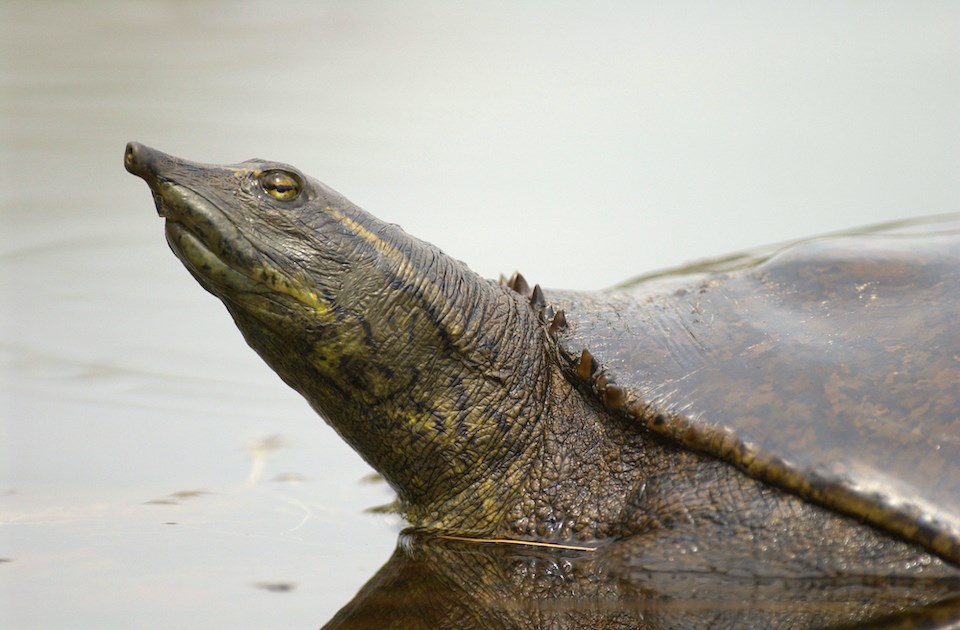Several invasive turtles have been spotted in Vancouver's largest urban park, but one stands apart for its distinctive snout.
While most turtle species don't have significantly protruding noses, one species observed in Stanley Park has skinny, elongated nostrils.
Softshell turtles aren't native to the Lower Mainland and could threaten local ecosystems through predation and competition for food and habitat space. They are predominantly carnivorous, feasting on mainly aquatic animals and insects, including crustaceans, insects, small fish, and amphibians, according to the B.C. government.
The invasive turtles can be identified by their flattened body shape, formidable jaws, lack of scales on their carapace (the top of the shell), and a layer of solid bone beneath the centre of the carapace that is absent at the edges.
People may confuse the softshell species with other turtles in B.C., including the native western painted turtle and the invasive red-eared slider turtle. However, they are distinguished by their soft, snorkel-like nostrils, leathery shells, and long necks compared to their bodies.
Where are softshell turtles native to?
Softshell turtles are native to many places worldwide, including parts of North America. They are one of the continent's largest freshwater species.
The spiny softshell turtle's range extends from "the central-eastern U.S. to Wisconsin and Minnesota, and as far south as Mexico," according to the National Wildlife Federation.
They live in lakes, ponds, fast-flowing rivers, and a variety of marshy habitats.
The B.C. government says a spiny softshell turtle (apalone spinifera) was observed in Stanley Park in 2011 and "was most likely an abandoned pet."
How have they spread into Metro Vancouver?
Softshell turtles have spread outside of their native habitats through their use in food and traditional medicine.
Softshell and other turtle species also appear in local lakes and ponds by pet owners who abandon them. They may buy turtles and not consider the steps needed to care for them.
Before purchasing a turtle as a pet, consider whether you are prepared for a long-term commitment. The animals live up to 50 years in the wild.
Softshells' shape makes them fast swimmers, with "relatively lightweight shells, and strongly webbed feet." Combined with their wide-ranging diet, they could quickly "establish in numerous habitats across the province, according to the B.C. government.
Prevent the spread of invasive turtles by not releasing them into the wild. Report any sightings of them on the Report Invasives mobile apps. The apps can be used offline as well. You can complete the report when you are at the invasive species location, click 'Submit' and the report will be sent as soon as you are back in cell coverage.
If you do not have a smartphone, you may report using the online form or via email to [email protected] (attach your photo to the email).



